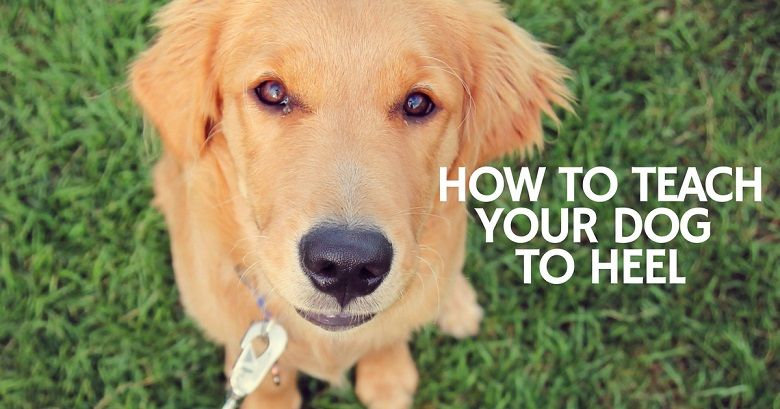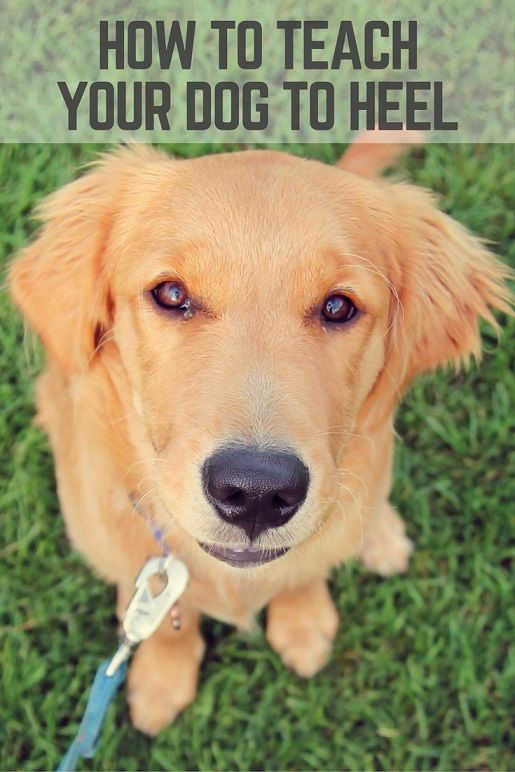How to teach a dog to heel
My dog Remy and I are continuing to work on heeling.
Whether you are just starting to teach your dog the heel command or if you’ve been working with her for a long time and getting nowhere, below are some tips for teaching your dog to walk on a loose leash.
If you have other ideas, share them. Most of our dogs could use help with heeling, including my pup Remy!
Teaching your dog to heel

1. Remember the walk starts at the door.
As soon as you touch the leash or put on a coat, your dog might become excited. If she is out of control before you even put the leash on, make her sit or lie down until she is calm.
Obviously you want to have highly valued treats in your pockets or in a treat pouch. Find something your dog is motivated to work for. A treat pouch really does help!
The same is true with walking through the door and down the stairs. Every piece makes up the walk.
This might mean you have to put your dog’s leash on a half-hour before you intend on walking so by the time you are ready to go, she is calm. A calm dog can pay attention and learn. A frantic dog can’t.
2. Make your dog sit every time she lunges forward.
This technique works better than people realize. The problem is, most of us don’t have the patience to stop every five seconds during an entire half-hour walk.
The day I brought my dog Ace home, he wanted to barge out of his kennel, barge through the door and barge down the stairs. Instead, I stopped and had him sit every time he pulled. June 2018 update: Ace has passed away.
It took us 10 minutes to get from his kennel to the front door and at least 10 or 12 attempts to get through the door. I remember people staring at me like I was crazy.
I had steps outside and had to go through the whole routine again at the top of the stairs. But after that first day, Ace had already learned that in order to get anywhere he could not pull.
This technique goes a lot faster if you use highly valued treats like bacon, jerky treats, real hamburger, etc. Again, a treat pouch helps you carry all this.
3. Be consistent when teaching a dog to heel.
If you allow your dog to pull sometimes, she will try to get away with pulling all the time. If you make her heel but your husband doesn’t, she will learn heeling is optional.
4. Buy a dog backpack to help with teaching heel.
Ace heels much, much better with a dog backpack on because it gives him a job to do.
It really puts him in a focused mode, and he is less concerned with pulling. Plus, I’m in favor of anything that tires the mutt out! Another way to give him a job is to let him carry something in his mouth like a stick or water bottle. He will carry anything I hand him, and that becomes his job instead of pulling.

5. Stay relaxed when teaching your dog to heel.
If you are angry and gripping the leash like there’s a bear on the other end (OK, for some of you, there pretty much is!) or anticipating bad behavior from your dog, it gives her more reasons to be anxious, too. Dogs pick up on our energy more than we realize.
The best thing you can do for an overly excited dog is to stay calm and in control. I know that’s easier said than done! Focus on standing tall and proud without being tense.
6. Don’t allow the leash to get tight.
Part of staying relaxed is keeping the leash loose. If you pull back on the leash constantly, your dog will resist and pull harder.
Instead, allow slack in the leash and when your dog pulls ahead, just stop and lure her back with your highly valued treats. The leash and training collar should be loose and relaxed before you move forward again.
If you give a slight correction, it should be a light tug to get the dog’s attention, not a frustrated yank!
7. Focus ahead, not on your dog.
You can sense where your dog is without staring down at her the whole time. If you are constantly staring at her, then she is in control.
One trick I use with Ace is to loosely hold the middle of his leash at the seam of my pants. That way when he begins to sneak ahead, I feel the leash tighten without looking at him. It also reminds him to stay in heel position.
8. Sign up for an obedience class.
Taking an obedience class will really help if you want to teach your dog to heel. When I first adopted Ace, I planned on training him on my own. I’d trained other dogs and taken them through formal obedience classes, so I thought I could teach Ace myself.
Let’s just say I changed my mind when Ace pulled and was basically out of control every time we passed another dog on a walk.
Once I started taking him to dog obedience training, he got used to other dogs so it was no longer an event every time we passed one on the street.

After taking Ace to that first class, I was hooked and have been taking him to obedience and agility ever since.
9. Use treats when teaching your dog how to heel!
Use anything to keep your dog’s attention. It might be plain old kibble, jerky treats, bits of hotdogs, cheese or a tennis ball.
It doesn’t really matter as long as you can get your dog to look at you and reward her when she is not pulling. I try to reward Ace when I catch him making eye contact.
10. Walk at different speeds and directions.
Walking at different speeds and directions will require your dog to pay attention to you. If Ace sneaks ahead, I slow down or even stop and he backs right up. I’ve even unintentionally trained him to back up when I say “Get back.”
Teach your dog that you are unpredictable and don’t always go in a straight line or at the same pace. You are deciding where to walk, not your dog!
Do a U-turn, walk in a circle, etc. If you are able, run with your dog for the first 15 minutes. It will be easier for her to stay at your side if you are going at a faster pace.
Plus it will get rid of some pent-up energy and make it easier for her to focus when you slow down to a walk.
11. Practice random obedience during the walk.
Randomly telling your dog to sit, lie down, stay or come while you are walking will teach her to pay attention to you. It will also help to keep her in that working mode.
Try taking a step back and calling your dog to you if she sneaks ahead or pulls. I own a dog walking business, and one of the best ways to tire out a dog is to go for a walk and work on training.
12. Limit distractions at first.
Don’t expect too much from your dog. Be patient and take training in small steps. Work indoors first, then in your driveway or a parking lot with few challenges.
For when you must exercise your dog and you know he’s going to pull (I know, that’s how it is in the real world), try using a different tool for training vs. non-training.
For example, a regular buckle collar, slip collar or martingale collar during training and a no-pull harness or Gentle Leader when you just need to get a good walk in.
13. Use the right training collar.
The “right” training collar or harness will be different for every dog. If you take advice from someone on the best tool, take the advice into consideration but realize all dogs are different.
I recommend you try a martingale collar first, also called a limited slip collar. This is because a martingale collar tightens slightly under pressure but not so far where it can choke your dog.
I don’t see anything wrong with Gentle Leaders or Haltis, and I also recommend prong collars for some dogs. If it means you can walk your dog in peace, the right tool is worth it!
The goal is to use these collars as a tool to encourage loose-leash walking. Then you can eventually return to a slip collar and hopefully a regular collar.
Other people will depend on a Halti head collar or Gentle Leader all the time and that’s OK too. It’s up to each owner and depends a lot on the dog.
Pretty soon you’ll be teaching your dog to heel off leash!
Related articles:

Kim Chappell
Tuesday 11th of June 2019
Great tips! Here is one to add to the backpack tip. Put half full bottles of water in each side of the pack. As the dog walks, the water sloshes around causing the dog to really need to concentrate more because it moves differently than the dog does. Also, do a structured walk - which means no sniffing, marking, or pulling, and using release word to let the dog do their business then right back into a structured walk will really help keep the dog pay attention to the owner and ignoring other things. And I agree, the right training collar will make all the difference. Often once dogs learn owners are consistent with training rules the dog can go back into a regular flat buckle collar.
Jack
Sunday 23rd of July 2017
When I was training my dog Mike to not pull on the leash, I gave him a red, yellow, green system. Red got "no pull!" when he was pulling. (For some reason "Heel" has never appealed to me). Yellow a wiggle of the leash on his back, with, "no pull" in a lower voice. This told him he was getting close to the loud version of "no pull." Green was "good boy" when he had stopped pulling.
He's almost six years old now. When we walk in town the leash is dragging on the ground as he saunters along at my pace.
Mike is an active Yellow Labrador.
Sandy Weinstein
Tuesday 3rd of January 2017
great tips even for older dogs that need a refresher course. when my girls start to go ahead of me or off in another direction, i stop and change directions. when i stop i make them come back to me, sit and wait. i work on these in their pen without a lease. it is a big pen.
Della Smith
Tuesday 3rd of January 2017
The couple of times I was able to walk my rescue cockapoo with a chest harness, he was much better on the leash. The problem is that he chews through every harness I've bought him from Gentle Leaders to Haltis. I can't afford to keep spending money on harnesses, collars, and glow collars he will destroy. Is there any type of harness that will work on my Rufus? He is hard to fit for a Martingale collar but I may have to go back to that since I live in terror that he will back out of his collar/leash and end up getting hit by a car. Is there any kind of Martingale-style harness available?? Help!
Lindsay Stordahl
Tuesday 3rd of January 2017
He chews them during your walks, you mean?
Chuck Taylor
Monday 5th of December 2016
Changing directions is a good idea -but- what if then you are pulling the dog!? My Dakotah will sometime lag behind me after changing directions. It takes some time before he agrees to the direction change.